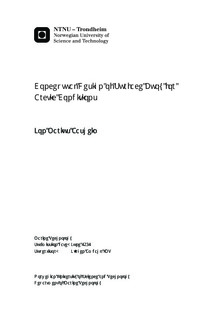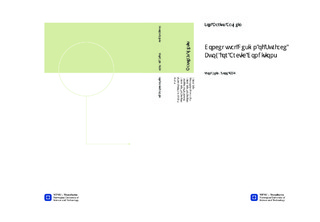| dc.description.abstract | Due to a rising interest in oil exploration in Arctic areas several new platform designs have been introduced to combat the problems with level ice loads. This has led to research into ice strengthening and how this affects the open water behaviour. One of the new designs, called the Total Buoy, has a slanted hull in the waterline intended to deflect level ice down and around the structure, but this hull design introduces a geometrical non-linearity. This non-linearity causes problems in the design of these types of structures, because most hydrodynamic program cannot handle the rapid change of geometry in the waterline. This has inspired several attempts to write a simple numerical model to handle the calculation, and avoid costly model tests in the pre-design.A large part of this thesis presents the theory and methods used in the development of this new numerical model. This is meant to document the thought process in a way which can allow others to continue the development. The numerical model was developed to calculate motion results from regular waves in the three symmetric motions; Surge, Heave and Pitch. In addition to this a very simple ice calculation was included as a starting point for further development.As part of this work on a new numerical model a parallel study of an alternative commercial program was done. This is to test the usability of an (expensive) commercial program in relation to this non-linear problem. The DNV program Wasim was selected for this purpose, and the modelling has also been documented and the input files are included in the electronic appendix.After documenting the basis of the numerical model and Wasim model it was necessary to do a comprehensive comparison study of the models. To help with the comparison Force Technology allowed the use of model tests results which were performed on the Total Buoy concept in 2006. The comparisons showed that while the numerical model was showing some large responses around the heave natural period in both heave and pitch the results were in general close to the model tests. The Wasim model did not show the same correlation in surge and pitch, but the heave results were shown to be close, but the use of the Wasim program is believed to be unwise on this type of problem.Finally, an assessment of the Total Buoy's open water and level ice behaviour was done. This assessment showed that the Total buoy would most likely have problems with large pitch motions. This was shown to be true in both the Norwegian Sea and the Eastern Barents Sea, the Norwegian Sea was found to be a unlikely deployment area due to the lack of level ice. The pitch motion was so large that it would make year round human habitation impossible, and it was advised that the buoy should not be used for this purpose, and only in the eastern Barents Sea. Finally, it was found that the ice theory which was applied for the ice calculation could not give a true assessment of the level ice capabilities of the buoy, and the lack of other alternative solutions made the assessment impossible. | nb_NO |

